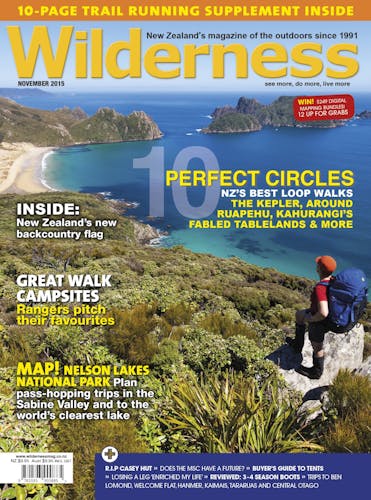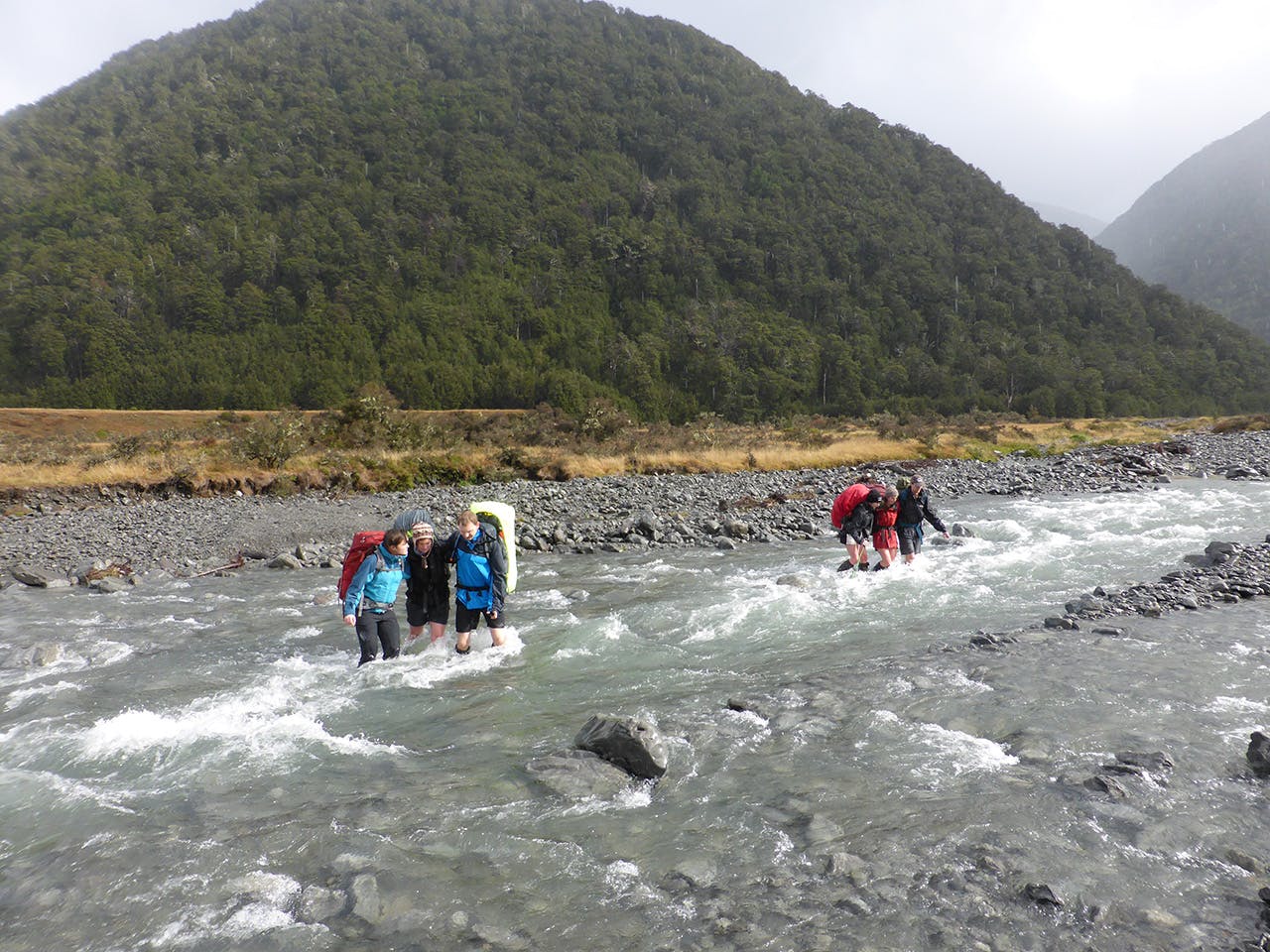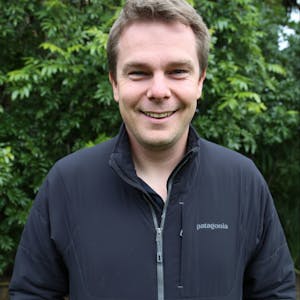Matthew Pike asks if the Mountain Safety Council continues to be relevant in the 21st century
The more changes the Mountain Safety Council makes, the more it seems to baffle senior members of the outdoor fraternity.
Six months ago, Wilderness discussed the council’s decision to shut down its outdoor training programme and regional offices. Since then it has continued a restructure that has seen it wave goodbye to two members of its avalanche awareness team and the two coordinators and technical committee supporting its firearms training programme.
It’s now focusing on spending its $2m-a-year budget on getting key messages to those who need it based on backcountry accident and mishap data. It plans to target those most at risk using the likes of DOC, accommodation providers, tour operators, local councils, tourist boards and so on, to promote these messages.
The council’s CEO, Mike Daisley, says there are three areas the MSC will be focusing much of its effort on based on incident stats. They are the Central Plateau, various valleys in the southern highlands region around Queenstown, and Auckland.
Daisley uses the example of the new Queenstown Visitor Centre to explain how the new messaging approach will work. The MSC helped create a safety wall, based on an understanding of exactly who visits the centre, from which countries and doing which activities.
“It’s aimed at a particular kind of person going into that particular visitor centre and the information changes through the year,” says Daisley. “The single biggest domestic group into Queenstown is from Christchurch, but we also know that the average Cantabrian doesn’t go into the visitor centre, so the information isn’t aimed at domestic people.
“The MSC acts as a hub, drawing expertise from partners and people in the sector, and coming up with strategies.”The effectiveness of messaging for reducing accidents in the backcountry is being questioned by many who have had a close involvement with the MSC in the past. John Greenwood, who had been a voluntary instructor for the council since the 1960s, describes this direction as the “stuff of nonsense”.
He says although there’s an argument to say the messages will get into more people’s hands, whether it’s effective is far more debatable.
“On the Tongariro Alpine Crossing, in Mangatepopo Valley, I met an older couple from America wearing light sand shoes. I said ‘I hope you have good wet weather gear and food’. The man replied ‘they never told us we needed any of that’.
“I later spoke to a ranger who said there’s information in every accommodation within 100km of the national park. That’s the underlying problem; some people will pick up a leaflet and read it, some won’t.”
But Daisley argues the science is strong and a vast majority of people will take notice if it’s presented in the right way. “If you put hard safety messaging in the wrong place, people can ignore it, but the vast majority do take information on board. But you tend to hear about the few who don’t and there’s not much you can do about individuals like that.”
Noel Bigwood was an instructor for the MSC for almost 25 years. He received a Lifetime Award from the council in 2010 and is still very active with Land Search and Rescue, being one of just three national assessors.
“I don’t relish change for change’s sake. But we needed change or we were clearly going to fall off the precipice and never come back.” – Mike Daisley, Mountain Safety Council
He’s concerned that, as part of the restructure, the technical committees have been axed, with the plan being to form committees as and when issues arise. He says this decision has thrown away many of the best brains.
“The technical committees were a true example of collaboration across the sector. By getting rid of these, they’ve basically got rid of their experts. A lot will depend on who they hire for their advisory positions, but no one person can ever have the knowledge of a properly selected advisory committee.”
Daisley insists the council still has the drive to bring in expert knowledge and the new structure allows committees to form for very specific reasons. He says they’re prevention focussed: “We’re not waiting for incidents to happen,” adding that as well as technical experts the committees can include the likes of local tourism groups with knowledge of who’s travelling to the region, and communications experts who know which channels to pursue to reach particular groups.
But Bigwood claims there are already examples of where a lack of expertise has botched the council’s messages. “There have been messages either out of date, illegal, environmentally unsafe or downright dangerous because they stopped running communication past committees and there’s not the expertise in the office to properly vet them.”
He uses the example of river safety Youtube videos put online earlier this year illustrating a safety message that had been dropped in 1995. Bigwood says the videos have since been removed.
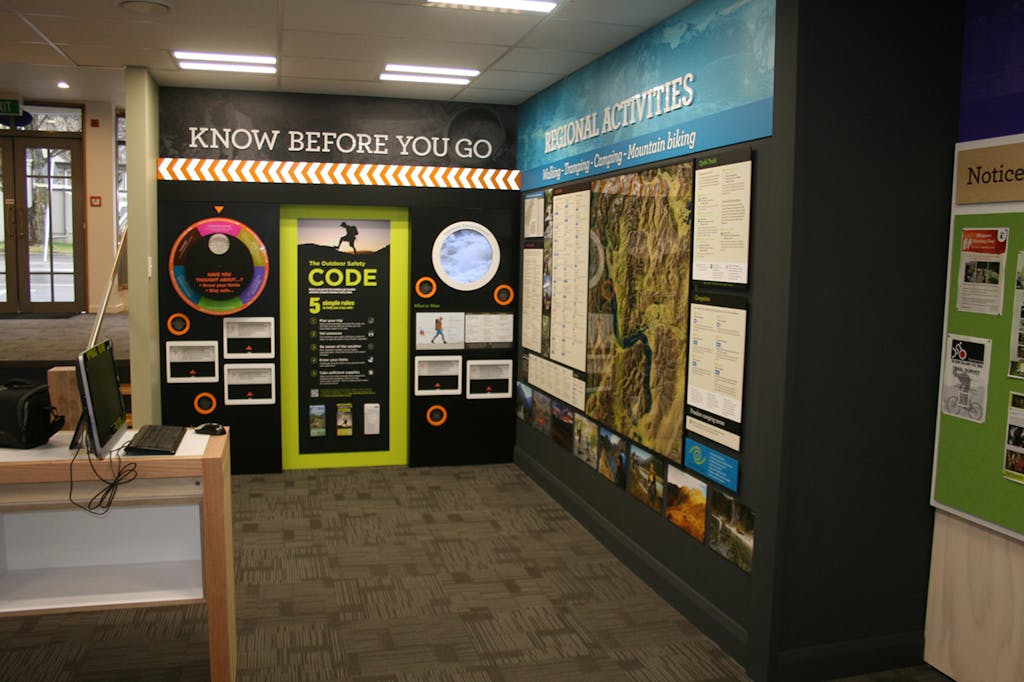
An example of the kind of messages and displays MSC will be producing to target tourists. Photo: Noel Bigwood
He also cites a poster warning hunters not to drink alcohol until they’ve put their shotguns away. “It was a good message,” says Bigwood. “But the poster had shotguns leaning against a wall, and you don’t lean firearms against a wall because people forget to unload them and, if the guns fall over, often they’ll discharge and people die.
“It’s like leaning firearms against a fence – you just don’t do it. If these things don’t go past technical committees you make mistakes like that.”
But Bigwood admits the MSC has been put into a difficult situation regarding its training. “The government said it won’t fund training organisations and, while the MSC was defined as a training organisation, it was looking at having its funding slashed. They needed a new way to fund themselves.”
And though Bigwood is sceptical about the direction the organisation has taken, he hopes it works: “It’s very important to all of us,” he says.
Bill O’Leary, president of New Zealand Deerstalkers’ Association, and with nearly 40 years’ experience volunteering as an MSC firearms and outdoor instructor, is positive about part of the MSC’s transition. He believes collating and analysing incident data, and providing safety messages based on this, is a positive step. “If it works, that would be great,” he says.
But the way the council has handled changes to the firearms programme which, in contract with New Zealand Police, trains and tests 10,000 applicants each year, has infuriated him. O’Leary says the two firearms co-ordinators no longer part of the team provided consistency for what instructors were teaching nationwide.
“The moderation has gone. There is no consistency, therefore, in what is being instructed,” he explains. “And by getting rid of the standard technical committee, they’ve removed the one facility that provided research and brought together expertise.”
O’Leary says as a result of these decisions, volunteer firearms instructors are resigning from the MSC. “A number of major regions in New Zealand now have no MSC instructors, so it’s not now in a position to fulfil its contract with the police.
“They’re funded to run these courses, but the reality is the decisions are being made by people with no connection whatsoever with firearms and, I would say, no understanding of what’s involved or the size of the programme.”
O’Leary believes the changes have destroyed the deerstalkers’ association’s loyalty to the organisation. “It’s time for police to take charge of it again and get stability back into the system.”
O’Leary and John Greenwood, both long-time volunteer firearms instructors, say they were told more than once there would be no changes taking place to the firearms programme. Greenwood says it has left a lot of instructors bewildered.
“There are a number of people who have said ‘stuff you MSC – we’re not going to do this instruction for you anymore’.” Greenwood doubts whether the MSC wants anything to do with the firearms programme.
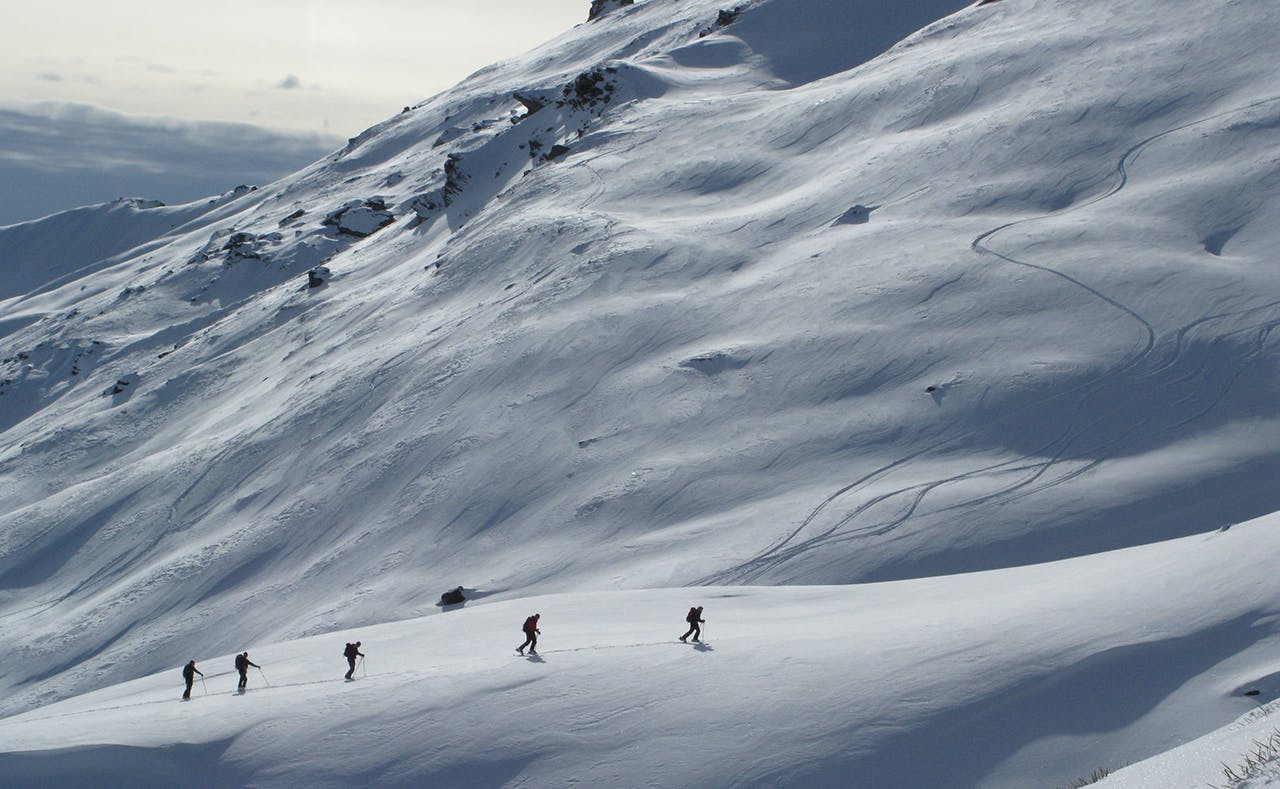
The big question is whether the MSC’s new focus on messaging will result in fewer backcountry. Photo: Aspiring Guides
Since the MSC did away with the outdoor training programme, previous volunteers have been scraping together a new nationwide organisation called Outdoor Training New Zealand. Already, the group has 120 members and five branches – Waikato, Bay of Plenty, Taranaki, Manawatu and Wellington – with several more branches close to forming. And while the MSC has contributed some money towards this, others have been less lucky.
Andrew Hobman was MSC’s avalanche and alpine programme manager. He’s desperately trying to form a similar avalanche programme independently. He asked the MSC for support for this when he could see the writing was on the wall, but was refused.
“They declined – they didn’t want to work with us at all,” he explains. “The frustrating thing is we gave them a solution to continue our work, but we didn’t get the support.”
So he’s doing it the hard way, launching Avalanche NZ – a non-profit company that is already supplying avalanche safety gear to Small Planet Sports in Queenstown for customers to hire.
He hopes to do the same in other parts of the country and turn the organisation into a national body that advises professional bodies and the public, as well as working with avalanche safety teams elsewhere in the world to share the latest ideas.
But Hobman says losing the MSC’s programme has already led to problems. “By losing the programme we lose consistency across the country of avalanche education and everybody teaching the same thing,” he explains.
“We’ve also lost the opportunity to be a conduit – a touch point – for the likes of DOC, guides, universities, polytechs and so on. And we lose public outreach. We were out there, offering the opportunity for the awareness of avalanche safety.”
It’s an unfortunate coincidence that the avalanche awareness programme was changed during one of the worst ever years for avalanche fatalities. “An avalanche is the most likely reason three people went missing on the Linda Glacier last summer. If that’s the case, then six people have died due to avalanches since Christmas, which is the worst spell by quite a long way since 2003.”
The fact that it’s people who trigger avalanches, says Hobman, means we can learn from such incidents if we have the resources to do so.
“The MSC is dead in the water as far as firearms instructors are concerned” – Bill O’Leary, NZDA
One of the big challenges the MSC faces in the future is being able to prove its effectiveness. Mike Daisley says the ultimate goal is to make a dent in the number of people having serious accidents and injuries, but measuring the success isn’t entirely straightforward: “Without trying to put an excuse in place, we know the number of people participating in the outdoors is going up, so no increase could be interpreted as a success,” he says.
Noel Bigwood says measuring success was easier when the MSC first formed in 1965 but is harder now with so many other factors, such as safety information and training coming from numerous sources.
“Once it was the big player on outdoor safety in this country. Now it’s just a single office with communications experts and advisors. I’m not sure you can pin any improvement, or opposite, on anyone because what they’re doing is woolly – they advise everyone else what to do but it’s hard to prove the effectiveness of anything council has done.”
So does the MSC have a future in New Zealand? Despite being involved with the council almost since its inception, John Greenwood doubts it: “I’m not closely involved with the management of it now, but I think it’s going to grind itself to a halt and become a non-entity, and someone else will pick it up.”
Robin McNeill, president of the Federated Mountain Clubs (FMC), is also doubtful about the future role of the organisation.
“At the FMC, we’ve been pondering the relevance of MSC for a decade now,” he says. “It’s not clear it does have relevance in the 21st century. We set it up in 1965, and it was needed, but the world’s changed.
“I can’t speak for the general public, but for club members I can’t see we’d have much interest. As a construct it was a great idea, but everything has a life, and it’s life might be over.”
And NZDA’s Bill O’Leary sees no future for the MSC with firearms training. “As far as collation of information is concerned; yes, there’s a need for that in New Zealand. We also need expert committees to look through material and come up with appropriate messages to be taken to the community.
“But with firearms, the only resolution can be with police taking over, because the MSC is dead in the water as far as firearms instructors are concerned.”
Even Mike Daisley believes the MSC under the old structure was becoming irrelevant, hence the need for these drastic changes. He likens the old MSC to Kodak: “Kodak made the world’s best film but it disappeared overnight because, all of a sudden, no-one was buying film,” he says. “The council said in no uncertain terms it believes the MSC needs to be the leader in outdoors safety but, despite what it was doing being good quality, it was not relevant to the vast majority of people going into the outdoors.
“No-one likes change – I don’t like change. I don’t relish change for change’s sake. But we needed change or we were clearly going to fall off the precipice and never come back.”
Daisley’s confident that, over the next 10 years, the organisation will be the hub of safety expertise. “By working with partners to generate information for what it is to be safe, people might not see the MSC banner or realise it has come from us, but the information will be right in front of them to enable them to make a decision.”
Daisley has many critics but he’s keen to point out that virtually all 25 members of the council support the changes. Whether he’s made the right decisions or not, perhaps only time will tell.
How the MSC was born
Arnold Heine has been closely involved with the MSC since the very beginning, being a vice president of the FMC the year it created the MSC. Here he recounts the organisations formation.
- By the early 1960s, New Zealand Forest Service had cut many new tracks, erected suspension bridges and a great number of their standard four and six bunk huts
- This led to more New Zealanders venturing into the backcountry; many not connected with tramping clubs and relatively inexperienced in bushcraft skills
- There was an obvious need for basic bushcraft courses, supplementing those already provided by tramping clubs
- Meanwhile, following a number of serious alpine accidents, the Federated Mountain Clubs set up a task force to look at alpine climbing techniques and the need for a common club instruction system throughout New Zealand
- In November 1961, a refresher course for club instructors was held on Mt Ruapehu, followed by two further meetings in 1962 and 1963
- As a result of these meetings, an agreement was reached on the most acceptable techniques for the instruction of novice climbers
- The FMC’s Basic Instruction Manual for Instructors was published in 1963 and set the stage for a revitalised nationwide club alpine instruction system
- As the number of clubs and their membership grew, so did the need for a continuing Government-funded ‘mountain safety’ programme. This led to the formation in November 1965 of the permanent NZ Mountain Safety Campaign (later to become the NZ Mountain Safety Council)
- The aim of the Campaign was set out clearly in the FMC Bulletin, November 1965: “The aim of the campaign will be to encourage youth organisations to safely participate in mountain safety recreation and to reduce the incidence of mountain accidents by training, education, and publicity. In the main, the campaign will be directed, beyond mountain clubs, at leaders, or potential leaders, of youth organisations. The need to impart the lessons covering basic techniques is very great.”





